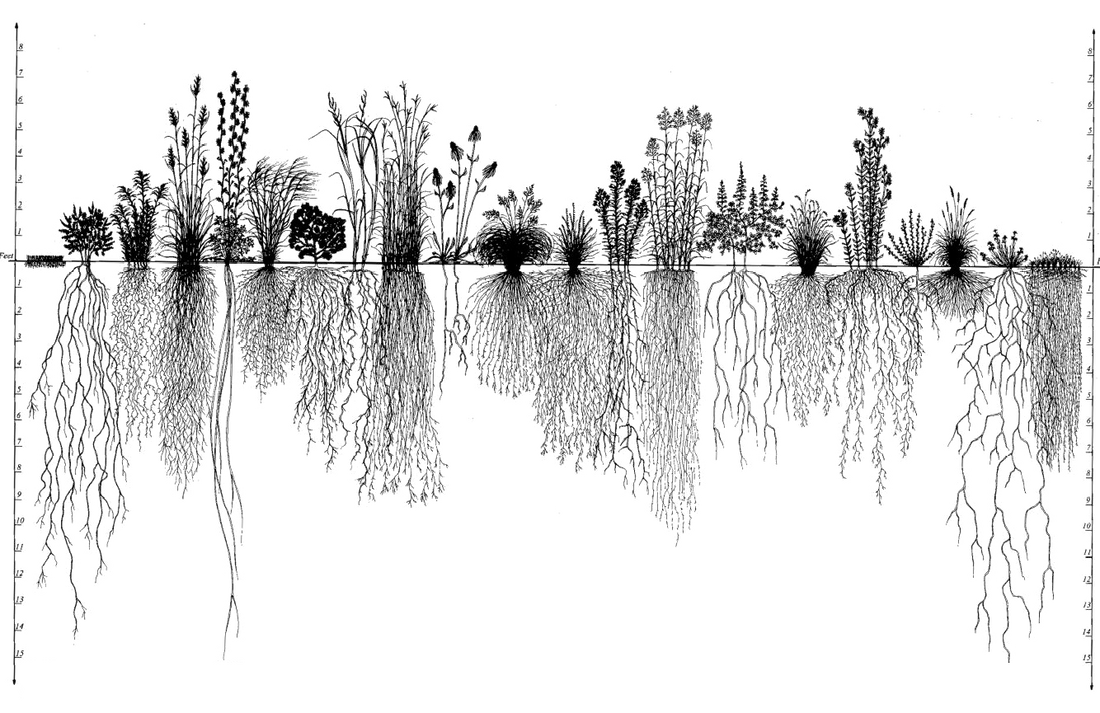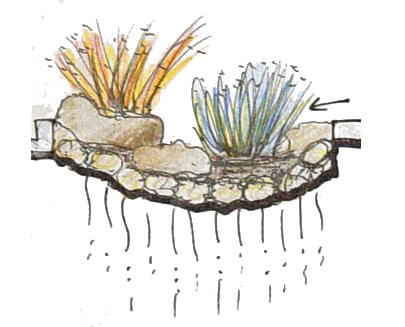Prepare for Rain
The North American prairies and plains are vast water management systems. Roots of grasses reach deep into the soil; root hairs separate particles of clay; ants and worms burrow down creating voids; mineral soil is made open and porous. This is a system that accepts and absorbs rain.
My work is targeted at integrating ecological processes and water resource conservation into every site plan. Rooftops and pavement are envisioned as water 'generators' - from there the primary role of the landscape is to slow, spread and soak rainwater into the soil, re-introducing the natural process of infiltration. Though we may experience 3-4 months without precipitation, we prepare for it.
Learn the Context
If places could speak.. well they do, but the form of communication varies and most significant details are hidden inside the soil, pages of books and family stories passed down for generations. When working on a project I make time to examine regional characteristics and local land use patterns. Learning the context is targeted at creating places that are fitting, attractive, comfortable for human use and ultimately provide a sense of belonging or restoring a lost identity.
Embrace Collaborative Opportunities
In my professional practice, collaboration is a well-worn path. Many of my most innovative solutions have come from working closely with clients, builders, and other designers; as a micro firm, Prairie Workshop routinely teams with and seeks input from allied professionals such as engineers, architects, artists and horticulturalists.
The North American prairies and plains are vast water management systems. Roots of grasses reach deep into the soil; root hairs separate particles of clay; ants and worms burrow down creating voids; mineral soil is made open and porous. This is a system that accepts and absorbs rain.
My work is targeted at integrating ecological processes and water resource conservation into every site plan. Rooftops and pavement are envisioned as water 'generators' - from there the primary role of the landscape is to slow, spread and soak rainwater into the soil, re-introducing the natural process of infiltration. Though we may experience 3-4 months without precipitation, we prepare for it.
Learn the Context
If places could speak.. well they do, but the form of communication varies and most significant details are hidden inside the soil, pages of books and family stories passed down for generations. When working on a project I make time to examine regional characteristics and local land use patterns. Learning the context is targeted at creating places that are fitting, attractive, comfortable for human use and ultimately provide a sense of belonging or restoring a lost identity.
Embrace Collaborative Opportunities
In my professional practice, collaboration is a well-worn path. Many of my most innovative solutions have come from working closely with clients, builders, and other designers; as a micro firm, Prairie Workshop routinely teams with and seeks input from allied professionals such as engineers, architects, artists and horticulturalists.


